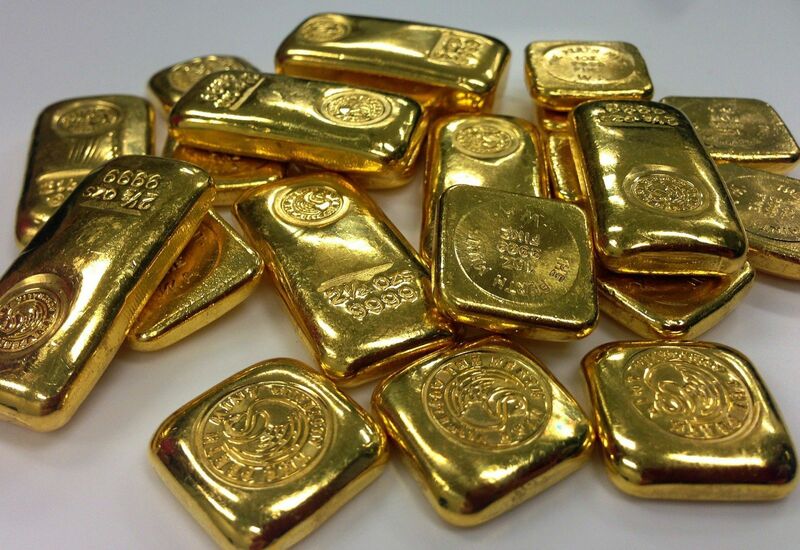Why You Should Be a HODLer of Gold

It seems like hardly a day passes without gold setting a new high in nominal terms. Gold is up about 15% year-to-date, with most of that gain coming since late February.
The precious metal has definitively broken out of the range it's been stuck in since the start of this decade, reaching a price above $2,400 recently. While a surge of buying from China is likely behind the recent rally, there are other factors at play here.
But first, let’s look at the China effect.
China Loves Gold
China has been quietly diversifying its state foreign reserves away from Treasuries and into gold for much of the past decade, although exact data is hard to pinpoint.
The famous quote attributed to Mark Twain comes to mind: “History doesn’t repeat, but it often rhymes.”
China buying gold and selling Treasuries is similar to how Europe’s central banks began to redeem dollars for gold in the late 1960s as the Bretton Woods System began to break apart. That was the beginning of the last long, sustained run up in gold, between 1968 and 1982.
There are other ways in which that time period rhymes with today. In 1971, when President Nixon took the U.S. off the gold standard, he also imposed a 10% tariff on imports. Donald Trump has proposed a 10% across-the-board import tariff if he’s elected to a second presidential term.
Enough history; let’s get back to gold.
Whether the Chinese government continues to add to its gold reserves at the current record prices remains to be seen. But one thing is certain - the appetite for gold from that country’s wealthy individuals seems to remain unsated.
Physical exports of gold to China from Switzerland nearly tripled in January, according to the Swiss Federal Customs Administration. That points to Chinese individuals looking for a haven, thanks to an ongoing rocky period for the country's real estate and stock markets.
In China, there is a new trend among the young to buy tiny 24 carat “beans” every month as a form of long-term savings, as stocks and the property market fade.
And then there are the world’s central banks, and their massive buying of gold…
Central Banks Are HODLers of Gold
Retail investors still dislike gold. Global physically backed gold ETFs saw their 10th consecutive monthly outflow in March, losing $823 million. During the first quarter, global gold ETF outflows piled up to $6.5 billion, led by North America and Europe while Asia attracted the largest inflows.
But as retail investors were selling, central banks were buying boatloads of gold. Their demand has been blistering, buying more than 1,000 metric tons annually for two consecutive years.
These central banks aren’t short-term traders. They are buying gold for the long term for several reasons. These include: hedging political risk; underpinning their currencies; and buying gold instead of U.S. Treasuries - which, given the rate at which the U.S. is accumulating debt ($1 trillion every 100 days, says Bank of America), are no longer free of risk.
When viewed through the eyes of an emerging market central bank, gold is special - an “everything” hedge - and one that has preserved its purchasing power for thousands of years.
Other factors pushing gold higher are: the “higher for longer” scenario, simmering geopolitics (Middle East, Ukraine, China), and the aforementioned huge U.S. budget deficit.
Where To from Here for Gold?
So where does gold (GCM24) go from here? I think higher, and possibly much higher.
Gold remains a significant distance from its real terms all-time high from 1980, which is equivalent to more than $3,000 an ounce after adjusting for inflation.
Philippe Gijsels, the chief strategist for BNP Paribas Fortis, and his colleague, chief economist Koen De Leus, are the authors of The New World Economy in 5 Trends. It’s an interesting read, and offers a how-to for investors in times of high inflation, hyper-innovation, an aging population, and a building climate crisis.
The authors predict that gold will rise from its current price to reach $4,000 in “the not so distant future,” as people hedge against a “new world.”
Citigroup (C) analysts are a bit more conservative, saying that gold will breach $3,000 an ounce over the next six to 18 months. Inflows into gold-backed ETFs — largely absent in recent years — will “buffer the path to $3,000,” the Citi analysts wrote.
I believe gold may stall around $2,500 an ounce for a bit, but then resume its climb to set an all-time high in real terms (after inflation).
If you want to get a lot of bang for your buck in gold, a good leveraged play on its price is Harmony Gold Mining Company Limited (HMY), which trades on the NYSE. The company has operations and projects in South Africa, Papua New Guinea and Australia. It is a profitable gold producer, with a copper footprint as well.
Highlights of the first half of Harmony's fiscal year include:
- Earnings per share increased by 221% to $0.51 from $0.17 per share.
- Record operating free cash flow, up 265% to $381 million.
- 11% increase in underground recovered grades to 6.29g/t (grams per ton) from 5.68g/t.
- 5% decrease in group all-in sustaining costs (AISC) to $1,403/oz) from $1,598/oz.
- 35% increase in group revenue to $1.68 billion from $1.34 billion.
- 14% increase in total gold production to 832,349 oz from 733,325 oz.
Its stock is up 49% year-to-date, 103% over the past year, and 388% over the past five years. HMY stock is a buy around its current price of $9.20.

On the date of publication, Tony Daltorio had a position in: HMY . All information and data in this article is solely for informational purposes. For more information please view the Barchart Disclosure Policy here.